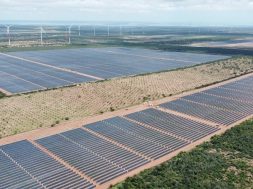
With millions of ICE (Internal Combustion Engine) vehicles on-road, India has the largest two-wheeler and three-wheeler market in the world. In the past few years, electric vehicles have gained popularity, especially in the 2-wheeler and 3-wheeler segments in the Indian market. In order to make e-mobility accessible to everyone, the Government of India needs to create a retrofitting policy to allow conversion of 2 and 3-wheelers into electric vehicles, subject to necessary terms and conditions.
Keeping the same in mind, we discussed various aspects regarding EV retrofitting of two-wheelers and three-wheelers with the Founder and CEO of GoGoA1. Excerpts from the interview: According to you, what has been a prime factor in this growth of electric vehicles? Has the impact of the pandemic been positive on this industry since e-commerce caught on and the focus shifted to green mobility?
There are three main reasons for the growth of electric vehicles. Technically, the engine efficiency is around 35% and electric motor efficiency is around 90 to 92%. In electric vehicles, the engine is replaced by motors and conventional motors will be replaced by magnet motors.
For electrification of vehicles, we can opt for renewable energy, such as solar charging infrastructure. Now the industry is decentralizing. For the last so many years, niche players controlled the entire business, but now small-scale companies are also contributing to the growth of the EV segment in India.
In the pandemic period, the positive part is people are more conscious about the environment. If you see in the last 7-8 months, the electric vehicle sales have increased to a great extent.
Currently, the electric vehicle industry is in the establishment phase and after 2025, it will get established.
What is EV retrofitting? What are the benefits of EV retrofitting? What about the safety of the vehicle once retrofitted from ICE to EV?
EV retrofitting means replacing the petrol engine with an electric powertrain. An electric motor gets fixed in the rear wheel and engine parts get removed. The existing EVs are suitable for user mindset and road conditions in India. Spare parts and services are available in the market. Converting existing vehicles is the perfect solution for the current situation. Almost all companies
are importing material from China and assembling. Aftermarket is playing a big role in the success of the vehicle.
Second thing is vehicles that are imported from overseas, people face a lot of issues with spare parts supply and services. Those vehicles are not made according to the Indian road conditions and user mindset as well as they don’t have an aftermarket value. EV retrofitting is an affordable solution as we are saving the re-manufacturing processes.
Talking about the safety of the vehicle, EV retrofitting is ARAI and RTO approved and it is more safe and reliable. EVs are still being sold at high prices, despite the fact that they are receiving subsidies. The high cost of GST and taxes on retrofitting kits deters the scope of the retrofitting ecosystem. What policy changes are required to propel the green boost
while keeping the new electric vehicle and retrofitting industries on the same page?
Now the government is promoting EV infrastructure. Usually, vehicle manufacturers and battery providers are different. It is the initial stage so manufacturers are providing vehicles and batteries altogether. Government should take initiative and make standardization and once the standardization is done new companies will get a chance to establish the swappable battery stations.
Irrespective of the brand, any electric vehicle can be charged at the swappable station. In EVs, there are differences in voltage and capacities. According to vehicle capacity, speed and range, users can charge their vehicle or take the battery and pay accordingly.
The government has always emphasized the localization of production. What initiatives need to be implemented to encourage component manufacturers to contribute to the “Make in India & Made in India” goal?
As the number of electric vehicles are increasing, the power requirement is increasing as well. In India, 20% of electricity is produced from coal. The Government of India should take initiative for standardization and provide subsidies to the battery providers and solar power charging. There should be swappable charging stations. In India, a large number of two-wheelers and three-wheelers are used for commercial purposes as they have taken initiative for last-mile delivery. If parallel charging stations and swappable charging stations would be there then EVs will be successful in India. What are the charges of converting your two-wheeler, three-wheeler or four-wheeler into an electric vehicle? If you are converting a two wheeler into EV, then charges would vary from Rs 20,000 to Rs 40,000 according to the power and model. For a three wheeler, it will be around Rs 50,000. EV retrofitting of a 1000cc four-wheeler will take around Rs 2.5 lakh.
















